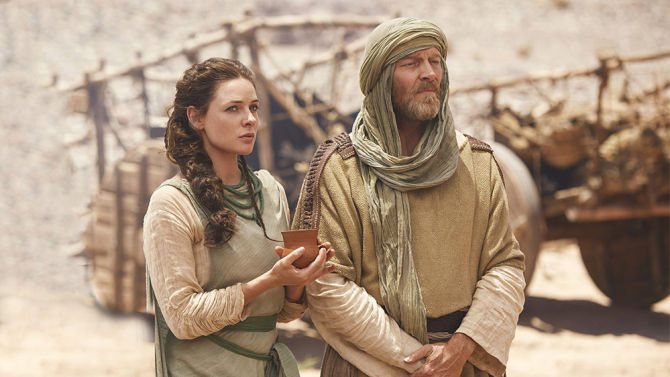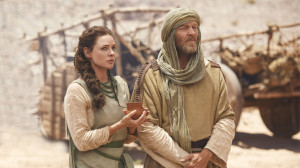Variety
Leading with “Mission Impossible” and “The Red Tent,” foreign shoots invested over $120 million in Morocco in 2014.
After a four-year slowdown due to the economic recession and the Arab Spring shockwaves, Morocco is back with a bang and proving once again a hotspot for big U.S. shoots.
“Mission Impossible 5,” “Queen of the Desert” and “A Hologram for the King” along with 30 other foreign films and TV productions sailed to Morocco in 2014, investing an estimated $120 million on local soil, a 420% year-on-year jump.
The next big shoot set to take place in Morocco is “Spectre,” Sam Mendes’ new James Bond movie.
Mendes and Bond star Daniel Craig recently traveled to Oujda, in northeastern Morocco, to shoot a small scene in a train — one that’s not electrified.
“Oujda is pretty spectacular: It’s surrounded by the desert,” said Zakaria Alaoui, who runs one of Morocco’s leading shingles, Zak Productions, and signed a one-year exclusive contract to work on the Bond movie.
The production will return in June for a 10-day shoot with locations including Tangier and the desert. That shoot will be of such scale that it’s requiring four months of preparation, said Alaoui, who will receive a career tribute at this year’s Marrakech film festival.
The last U.S. blockbuster Zak Productions worked on was “Mission Impossible 5,” which gave the country’s economy a major boost, as it spent an estimated $30 million on the ground, per Alaoui.
The two other major U.S. productions that lensed in Morocco this year were Tom Tykwer’s “A Hologram for the King,” an adaptation of Dave Eggers’ novel starring Tom Hanks as a struggling American businessman who travels to Dubai to get a fresh start, and Werner Herzog’s “Queen of the Desert” with Nicole Kidman as British explorer and diplomat Gertrude Bell.
Karim Debbagh at Kasbah Films, a production outfit with offices in Germany and Morocco, co-produced “Hologram.”
The movie was supposed to lense in Saudi Arabia, but after the production failed to get a shooting permit, Debbagh arranged for the filming to take place in Morocco.
“Hologram” filmed for 40 days in Morocco with a crew of 250 technicians and invested $5 million in Morocco (out of a $25 million budget), said Debbagh, who described the film as character-driven and praised Hanks for his down-to-earth behavior and friendliness during the shoot.
“Desert,” meanwhile, shot for two months in the country with Kidman, along with James Franco, Damian Lewis and Robert Pattinson.
“A driving force behind the foreign productions’ surge is the big comeback of bible-themed shows and movies,” explained Abderrazzak Zitouny, topper of the Ouarzazate film commission.
Ouarzazate, a picturesque city located in southern Morocco, and its Atlas Film Studios remain attractive backdrops for such film and series projects. Lifetime’s miniseries “The Red Tent” (pictured above) shot there this year on an epic scope.
Starring Morena Baccarin and Rebecca Ferguson, “The Red Tent” is an adaptation of Anita Diamant’s bestseller retelling a short chapter of the New Testament centering on the fate of Dinah, the strong-willed daughter of Jacob. Debbagh, who line-produced the two-part miniseries for Sony Pictures Television, said it required over 2,000 extras.
A flurry of upcoming biblical or related projects have also chosen Morocco. Among them: “King Tut,” the six-part series about the youngest Pharaoh to rule Ancient Egypt, produced by Canada’s Muse for Spike TV (with local company K Films); “The Book of Dead,” the Weinstein Company’s Egyptian detective series (with Kasbah Films); and Chris Menaul’s “Killing Jesus,” starring Dominic West (with Dune Films).
On top of the diversity of landscapes and professionalism of crews, the country’s offers the full support and hospitality provided by authorities, including King Mohammed VI (who is reportedly a movie buff), Morocco’s Film Institute (CCM), the Ouarzazate film commission and locals.
Case in point: For the shoot of “Mission Impossible 5,” Moroccan authorities allowed the production to block the main freeway between Marrakech and Agadir for three weeks. Locals didn’t protest even though it caused a deviation of 40 kilometers, per Alaoui.
“Anywhere else, blocking a major freeway for that long and for the needs of a movie would have caused uproar, but in Morocco we know how beneficial these foreign film productions are to our economy,” pointed out Zitouny.
Many U.S. productions pair European and Moroccan shooting locations. “American producers opt to film abroad because it’s cheaper than shooting in the U.S. and also, in many cases, because it increases production values and international appeal,” argued Zitouny, citing “Mission Impossible 5,” which shot in London, Vienna and Morocco.
In addition to fueling the local economy, American productions have also benefited the local film industry by giving crews and actors high-standard training.
Today, Morocco boasts Africa’s biggest pool of qualified technicians and well-established film schools: Marrakech’s Superior School of Visual Arts, ISMAC in Rabat and Ouarzazate film institute.
Morocco is, however, increasingly challenged by South Africa, which offers attractive locations as well as a tax rebate and cheaper crews.
Local industry players are therefore lobbying lawmakers to establish a competitive tax incentive.
Looking ahead, industryites across the board agree on the need to produce even more high-skilled technicians and actors who speak English, as well as build additional high-profile hotels to host more than three major productions at a time.








